
The American Institute of Steel Construction (AISC) has announced finalists for this year’s vaunted Innovative Design in Engineering and Architecture with Structural Steel (IDEAS²) Awards featuring a total of fifteen entries in the program’s 62nd year.
According to the organization: “The IDEAS² Awards recognize projects that illustrate the exciting possibilities of building with structural steel, highlighting the many ways steel can help express architectural intent while harnessing its unique advantages for both simple and complex structural systems.”
“In addition to modern masterpieces, our finalists include quite a few impressive adaptive reuse projects that used steel to define and protect amazing older structures, giving them a second life that is even better than their first,” AISC President Charles J. Carter said of the group. “We’re all surrounded by inspiring steel innovation every day, and it’s fascinating to think about how those innovations can transform spaces that have housed American communities for decades--spaces that would otherwise be lost.”
View the full list of finalists for this year’s honors below.
The Eskenazi School of Art, Architecture + Design - Bloomington, IN (Cover image)
Architect: Thomas Phifer & Partners
Jury comments: “It’s amazing to see that the team was able to honor the original design that Mies had. You can’t separate the idea of steel and the idea of that building--steel is the only thing that could make that building work. When it’s executed at that level, with that sensibility for detail and attention to the original intent of the architect, it’s a magical experience to see a building come together like that.”
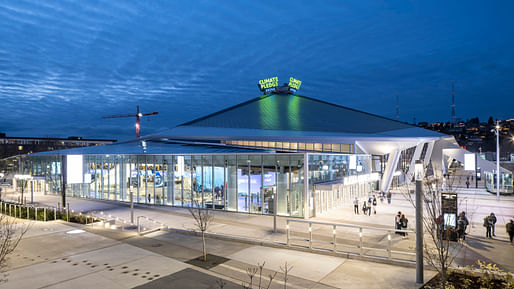
Climate Pledge Arena - Seattle, WA
Architect: Populous
Jury comment: “The challenge on this project was taking an existing structure, trying to keep the façade and the roof in place while the interior was gutted. There was excavation and an intense amount of shoring to keep the project stable during the construction process and do that on a very short timeframe. That succeeded in large part thanks to early involvement of the structural steel contractor, moving a lot of the decision-making earlier in the timeline of the project and allowing some of the coordination issues to go away before they would have even come up: during construction. There’s a lot of value in steel and a lot of things we can brag about with steel, and this is just a case where that shines.“
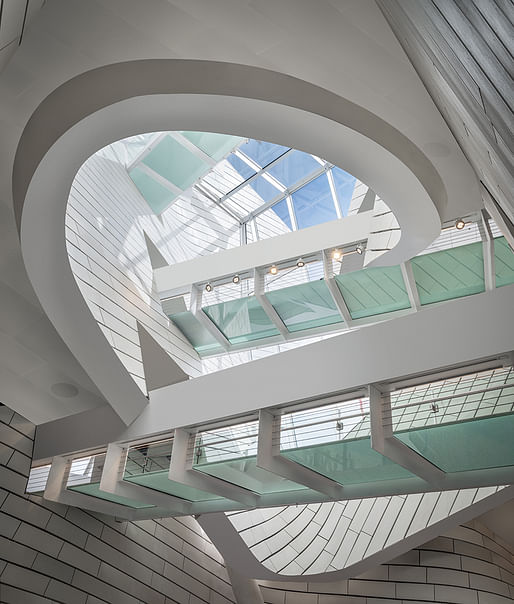
Orange County Museum of Arts - Costa Mesa, CA
Architect: Morphosis
Jury comments: “The use of steel throughout the building is both obvious and in some ways obfuscated, which told the jury that the architect and the structural engineers really understand the unique qualities and material capabilities of structural steel and found ways to use it to their design advantage--not just as a structural solution, but really more as a way of expressing and hiding the structure to play with the visitor’s ability to understand the building.”

425 Park Avenue - New York, NY
Architect: Foster + Partners
Jury comments: “The most exciting part of this project for me--and this is a nerdy engineering thing--is the expression of the exterior columns on this building. You look at the exterior of the building, and right away you can see the gravity system. And you can also see that it's not a simple gravity system. The exterior columns are outside of the floor plate of the building, almost outside of the exterior wall, part of the exterior wall. And they don't just go straight up--they slope in. As the building floor plate steps in, the columns step in as well. So you see the columns and you see a dramatic angle change in them. As an engineer, this is super exciting to see: an interesting structure boldly expressed outside the building. It is going to catch anyone's eye. Everyone's an engineer when they're looking at this building.”
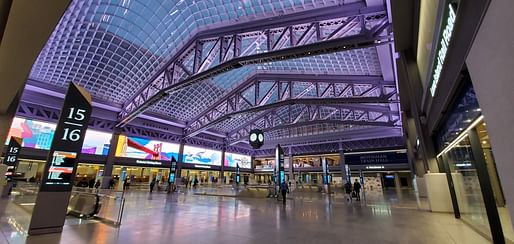
Moynihan Train Hall - New York, NY
Architects: SOM
Jury comments: “What was fascinating is that the structure, which had been perhaps wrapped in plaster for 100-plus years, is now unwrapped and has been exposed to view and becomes part of the sculpture of this beautiful space. It shows the resilience of steel: You can take that 110-year-old truss and still keep it working.”

Michael and Quirsis Riney Primate Canopy Trails - St. Louis, MO
Architect: PGAV Destinations
Jury comments: “The challenge on this project was the need to have things fit precisely at the locations where they were intended to be--that requires a lot of coordination between the fabricator, the contractor, and the detailer, and a lot of unusual layout techniques. Given the way those walkways snake through the site, the ups and downs, the almost roller-coaster-ride-type curves, I don’t think this project could have been made with anything other than steel. The way the paths are nestled through the trees seems almost natural. And with uncoated weathering steel, it just blends right into the background. It makes me wonder what those monkeys think about when they're looking at us humans as we walk down the path, if they're wondering if maybe we are the monkeys.”

ChemoCentryx Feature Stair - San Carlos, CA
Architect: DGA
Jury comments: "The stair is very sculptural, but all the steel elements, the stringer plates, and the tension rods are integral with the architecture. The curved stringers are supported by tension rods that also functioned as a handrail. Those lines go up to the ceiling. The curved plates continue as a sculptural element, mimicking what we're seeing on the stringers--very dynamic. It was a very thoughtful solution that is also very beautiful.”
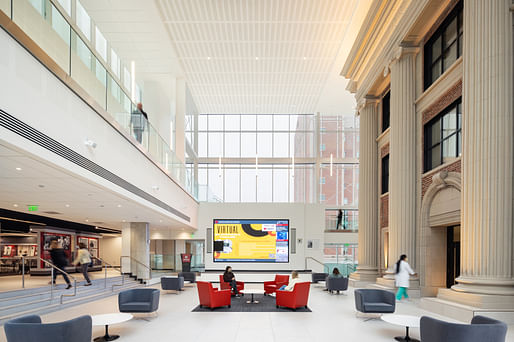
University of Nebraska Medical Center’s Wigton Heritage Center - Omaha, NE
Architect: HDR
Jury comments: “It’s not an expansion that builds off an existing wall. They wrapped the existing building in a box, and it looks wrong at first! It’s like, ‘well, why did they add that much more glass? Why didn’t they just tie it into the edge?’ Because it’s not a functional wall-to-wall. It’s more like a museum exhibit, and this is a glass box encasing it.”
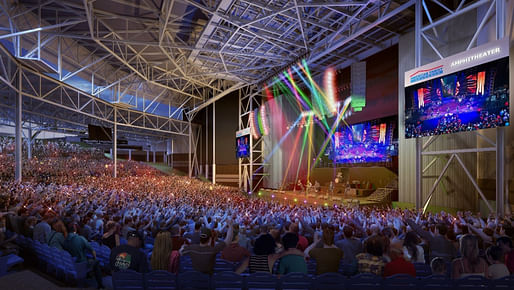
American Family Insurance Amphitheater - Milwaukee, WI
Architect: Eppstein Uhen Architects
Jury comments: “It is truly innovative to be able to analyze the existing structure from the 80s, to be able to come up with a cost-efficient system of lifting the trusses and developing the methodology to cut them loose, keep them stable, and to be able to reattach them 26 ft higher than what was originally designed. It's very cost-effective to reuse these existing structures as opposed to the environmental impacts of tearing them down. It's a great example of what can be done with steel in these adaptive reuse situations.”
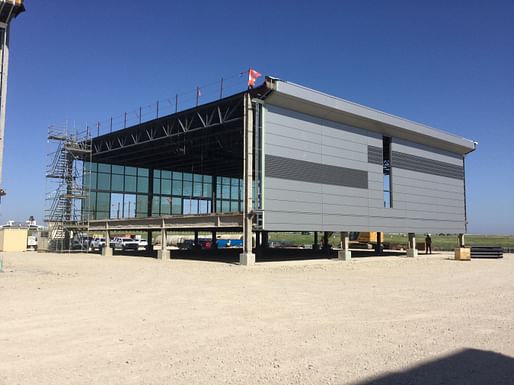
DFW High C Gates Demolition and Replacement - Core and Shell - Dallas, TX
Architect: PGAL
Jury comments: “This modular installation is a great way to showcase the efficiency of using steel in a tightly constrained site in an efficient speed-to-market application--and the adaptability of this material to create these modular sections that create open, long-span areas that can be quickly and efficiently assembled.”
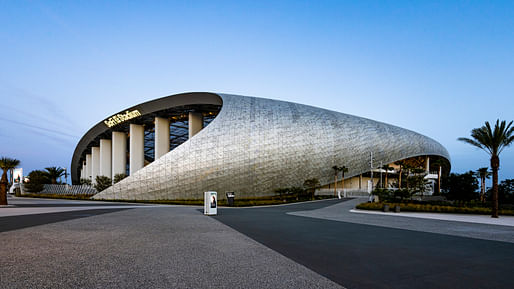
SoFi Stadium - Inglewood, CA
Architect: HKS
Jury comments: “It's really a special project, and its setting is really thoughtful. The use of the structural steel is almost overwhelming because it in many ways feels as grand and as spectacular as any of the great churches that you may have been in--I hate to sound like I'm saying that it's a church because it's a sporting facility, but in many ways it has a magical quality to it. There's a lightness to it that really elevates the spirit. It's a dramatic experience.”
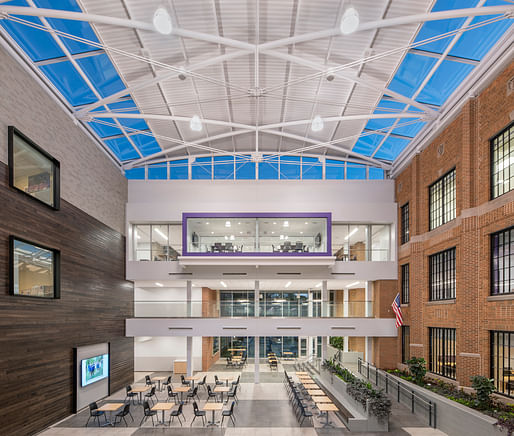
Downers Grove North High School Commons Roof - Downers Grove, IL
Architect: Wight & Company
Jury comments: "“What’s really refreshing about this project is that, as a public project which we would expect had a modest budget, they were able to maximize the outcome by adding the steel roof. It could have been very rudimentary, but it’s not. It’s a very elegant solution and an expressive structure. It’s a vibrant, well-lit space in the center of their school. It’s exciting for those students to be able to use that space for many different purposes.”
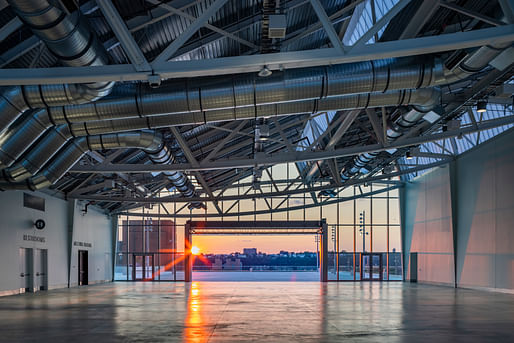
Javits Convention Center Expansion - New York, NY
Architect: TVS Design
Jury comments: “New York City is ever-changing, and the area around the Javits Center was changing, too. And to keep up to date, the Javits Center needed to expand. Instead of moving outward, which would be the obvious choice, they needed to go up. The project was unique because it had heavy loads and long spans and a very tight schedule--all reasons only steel would work.” -
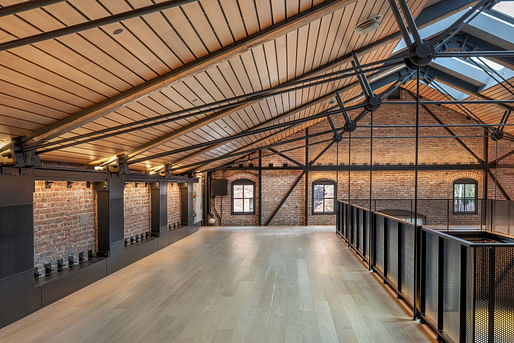
MacLac Building D - San Francisco, CA
Architect: Marcy Wong Donn Logan Architects
Jury comments: "“What stood out to me on this project is how successful they were at highlighting the existing structure. The brick is beautiful now. It's 100 years old unreinforced, but it wouldn’t have been a very good lateral system for this building nowadays, especially in San Francisco. So they put it in moment frames that don't hide anything. They added a new CLT diaphragm to the floor. They reused old timbers and the trusses for the compression element in the top where you need something stocky but took advantage of steel for the tension bottomed portions of the trusses--a thin, sleek design, something you could only have done in steel that completely lets your eye pass to the historic pieces of the building that remain.”
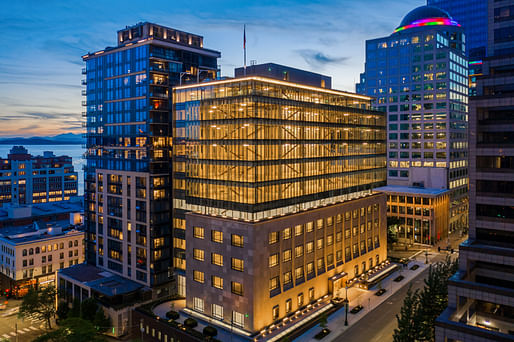
Federal Reserve Building - Seattle, WA
Architect: Perkins&Will
Jury comments: “The ability to connect a new structure over an existing building, and integrating seismic and lateral bracing throughout the existing building, showcases where steel has a truly unique ability to be connected and modified into an adaptive reuse of a building that otherwise could not be brought up to current codes.”
Winners will be announced in early 2023. Learn more about the awards program here.
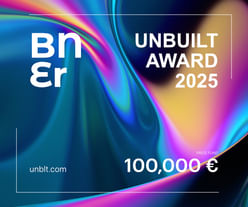
100,000 € Prize / Buildner's Unbuilt Award 2025
Register by Thu, Oct 30, 2025
Submit by Thu, Nov 20, 2025
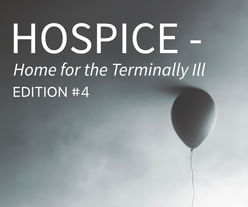
Hospice - Home for Terminally Ill #4
Register by Wed, Jan 15, 2025
Submit by Mon, Jun 16, 2025
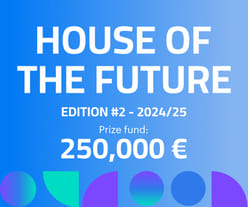
250,000 € Prize / HOUSE OF THE FUTURE 2024/25
Register by Wed, Apr 30, 2025
Submit by Mon, Jun 2, 2025
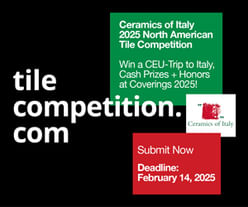
Ceramics of Italy Tile Competition
Register/Submit by Fri, Feb 14, 2025
No Comments